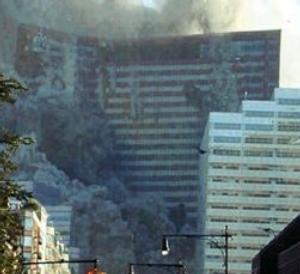
(The Unquestioned Answers)WTC 7 and 911

Photo at left: Half-way through Building 7's 6.5-second plunge, streamers suggestive of demolition charges emerged from the facade.
was the third skyscraper to collapse into rubble on September 11, 2001. According to the government, small fires leveled this building, but fires have never before or since destroyed a steel skyscraper.The
team who investigated the collapse were not allowed access to the crime scene. By the time they published their inconclusive report, the evidence had been destroyed.Why did the government rapidly recycle the steel from the largest and most mysterious engineering failure in world history, and why has the media remained
silent?A PBS documentary about the 9/11/01 attack, America Rebuilds, features an interview with the leaseholder of the destroyed WTC complex, Larry Silverstein. In it, the elderly developer makes the following statement:
|
This statement seems to suggest that the FDNY decided to demolish the building in accordance with Silverstein's suggestion, since the phrase "pull it" in this context apparently means to demolish the building. This interpretation is supported by a statement by a Ground Zero worker in the same documentary:
|
Building 6 was one of the badly damaged low-rise buildings in the WTC complex that had to be demolished as part of the cleanup operation.
An alternative interpretation of Silverstein's statement is that "pull it" refers to withdrawing firefighters from the building. However, according to FEMA's report there were no manual firefighting operations in Building 7, so there would not have been any firefighters to "pull".
That Silverstein would admit that officials intentionally demolished Building 7 is bizarre for a number of reasons. Silverstein Properties Inc. had already won an $861 million claim for the loss of the building in a terrorist incident. FEMA's report states that the cause of building's collapse was fires.
Presumably FEMA and the insurance company would be interested in knowing if the building was instead demolished by the FDNY. Moreover, the logistics of rigging a skyscraper for demolition in the space of a few hours would be daunting to say the least, particularly given that demolition teams would have to work around fires and smoke.
A third explanation is less obvious but makes sense of the non-sequiturs in the above explanations: perhaps Silverstein's statement was calculated to confuse the issue of what actually happened to Building 7. By suggesting that it was demolished by the FDNY as a safety measure, it provides an alternative to the only logical explanation -- that it was rigged for demolition before the attack.
The absurdity of the FDNY implementing a plan to "pull" Building 7 on the afternoon of 9/11/01 will escape most people, who neither grasp the technical complexity of engineering the controlled demolition of a skyscraper, nor its contradiction with FEMA's account of the collapse, nor the thorough illegality of such an operation.
Thus the idea that officials decided to "pull" Building 7 after the attack serves as a distraction from the inescapable logic that the building's demolition was planned in advance of the attack, and was therefore part of an inside job to destroy the entire WTC complex.
The Fires in Building 7
 |
| This photograph from FEMA's report, and others like it, appear to be the only evidence of emergent flames. |
Fires supposedly broke out in Building 7 following the impact of Flight 175 with the South Tower. Small fires burned inside the building throughout the day until its sudden collapse at 5:20 PM.
Photographs of the building's north side show only small, barely visible fires.
Fires with flames emerging from the building were only seen in an isolated section of the 11th floor on the east face of the building. (In contrast, other skyscraper fires have exhibited emergent flames throughout several floors.)
FEMA's report claimed that significant fires were visible on the building's south side, without providing any evidence.
The photograph below, taken in the afternoon, shows the upper half of Building 7 from the south.
There are no signs of fire.
Despite the fact that the fires in Building 7 were insignificant compared to other office fires, a decision was made not to fight them.
The government has never explained that decision.
This question would appear to be the greatest in engineering history. In over 100 years of experience with steel frame buildings, fires have never caused the collapse of a single one, even though many were ravaged by severe fires. Indeed, fires have never caused the total collapse of any permanent steel structure.
What was done to answer this most important question? The only official body that admits to having investigated the curious collapse of Building 7 is FEMA's Building Performance Assessment Team (BPAT), which blamed fires for the collapse but admitted to being clueless about how fires caused the collapse.
People who have seen buildings implode in controlled demolitions are unlikely to be as challenged as FEMA's team in understanding the cause of Building 7's collapse. They will notice, upon watching the videos, that Building 7's collapse showed all of the essential features of a controlled demolition.
Despite having the appearance of a controlled demolition, is it possible that Building 7 could have been destroyed by some combination of damage from tower debris, fuel tank explosions, and fires? Let's consider the possible scenarios.
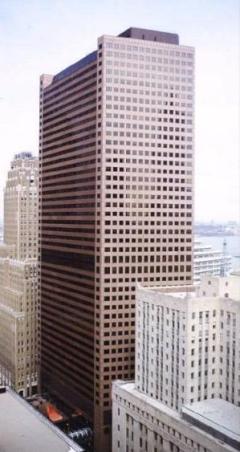 |
| Building 7 was about 5 times as tall as it was deep. |
The evidence does not support the idea that Building 7 was damaged by fallout from the tower collapses, nor that there were diesel fuel tank explosions. Fires were observed in Building 7 prior to its collapse, but they were isolated in small parts of the building, and were puny by comparison to other building fires. Let's imagine, contrary to the evidence, that debris from the tower collapses damaged Building 7's structure, that diesel fuel tanks exploded, and that incredibly intense fires raged through large parts of the building. Could such events have caused the building to collapse? Not in the manner observed. The reason is that simultaneous and symmetric damage is needed to produce a collapse with the precise symmetry of the vertical fall of building 7. This building had 58 perimeter columns and 25 core columns. In order to cause the building to sink into its footprint all of the core columns and all of the perimeter columns would have to be broken in the same split-second.
Any debris from the towers impacting Building 7 would have hit its south side, and any columns damaged by it would almost certainly be perimeter columns on its south side. Any fuel tank explosion would only be able to damage nearby structure. The rapid fall-off of blast pressures with distance from the source would preclude any such event from breaking all of the columns in the building.
(Furthermore the very idea of a tank of diesel fuel exploding taxes the imagination, since diesel fuel does not even begin to boil below 320 degrees F. 1 ) Fires have never been known to damage steel columns in highrise buildings, but if they could, the damage would be produced gradually and would be localized to the areas where the fire was the most intense.
No combination of debris damage, fuel-tank explosions, and fires could inflict the kind of simultaneous damage to all the building's columns required to make the building implode. The precision of such damage required to bring Building 7 down into its footprint was especially great given the ratio of its height to its width and depth. Any asymmetry in the extent and timing of the damage would cause such a building to topple.
References
Engineering is a science that melds theory and experience to create robust structures. Unintended structural failures are rare events that warrant the most careful scrutiny, since they test engineering theory.
That is why the NTSB carefully documents aircraft crash scenes, and preserves the aircraft remains, frequently creating partial reconstructions in hangers. If an investigation reveals a mechanical or design fault, the FAA usually mandates specific modifications of equipment or maintenance procedures system-wide, and future aircraft are designed to avoid the fault.
Unintended structural failures are less common in steel frame highrises
than in aircraft. Being the only such building in history in which fire is
blamed for total collapse, Building 7's remains warranted the most
painstaking examination, documentation, and analysis.
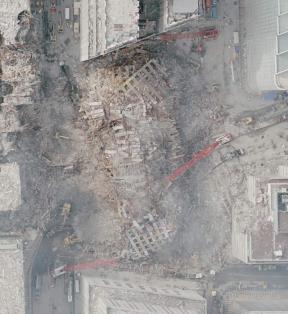 Building 7's
rubble pile
was at least as important as any archeological dig.
Building 7's
rubble pile
was at least as important as any archeological dig.
It contained all the clues to one of the largest structural failures in history. Without understanding the cause of the collapse, all skyscrapers become suspect, with profound implications for the safety of occupants and for the ethics of sending emergency personnel into burning buildings to save people and fight fires.
There was no legitimate reason not to dismantle the rubble pile
carefully, documenting the position of each piece of steel and moving it to
a warehouse for further study.
No one was thought buried in the pile, since, unlike the Twin Towers,
Building 7 had been evacuated hours before the collapse.
The pile was so well confined to the building's footprint that the adjacent
streets could have been cleared without disturbing it.
Yet, despite the paramount importance of the remains, they were hauled away and melted down as quickly as possible. The steel was sold to scrap metals vendors and most was soon on ships bound for China and India. Some of the smaller pieces and a few token large pieces of steel marked 'save' were allowed to be inspected at Fresh Kills landfill by FEMA's BPAT volunteers.
This illegal evidence destruction operation was conducted over the objections of attack victims' family members and respected public safety officials. Bill Manning, editor of the 125 year old Fire Engineering Magazine, wrote in an article condemning the operation: 1
Did they throw away the locked doors from the Triangle Shirtwaist fire? Did they throw away the gas can used at the happy land social club fire? ... That's what they're doing at the World Trade Center. The destruction and removal of evidence must stop immediately.
Dr. Frederick W. Mowrer, an associate professor in the Fire Protection Engineering Department at the University of Maryland, was quoted in the the New York Times as saying: 2
I find the speed with which potentially important evidence has been removed and recycled to be appalling.
Officials running the "cleanup operation" took pains to make sure the structural steel didn't end up anywhere but in blast furnaces. They installed GPS locater devices on each of the trucks hauling loads from Ground Zero at a cost of $1000 each. One driver who took an extended lunch break was dismissed. 3
References
2. The Towers, New York Times,
12/25/01
3.
GPS ON
THE JOB IN MASSIVE WORLD TRADE CENTER CLEAN-UP, securitysolutions.com,
[cached]
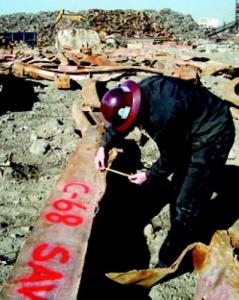 |
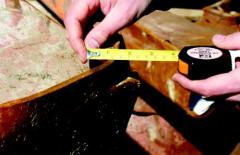 |
| A BPAT volunteer diligently measures a piece of steel that that FEMA allowed to pass to the Fresh Kills landfill rather than directly to the blast furnaces. |
What did the government do to investigate the unprecedented collapse of a steel frame building from fires? It gave FEMA the sole discretion to investigate the collapse, even though FEMA is not an investigative agency.
FEMA assembled a team of volunteer engineers, the Building Performance Assessment Team (BPAT), to write the World Trade Center Building Performance Study.
The engineers were not granted access to the site of the catastrophe. Rather, they were allowed to pick through some pieces of metal that arrived at the Fresh Kills landfill.
Most of the steel was never seen by the part-time investigators. It had been sold to scrap metal vendors, and was being shipped out to overseas ports as quickly as the newly constructed infrastructure could handle.
Note by webservant of Jesus-is-Savior.com: The fact that no plane ever flew into WTC 7 speaks volumes. How do 2 planes bring down 3 buildings? The truth is that there were carefully planted bombs in all three buildings. Firefighters at the scene testified afterwards that they heard multiple bombs going off, but a New York judge silenced them. Few people know the shocking truth that President George W. Bush's younger brother, Marvin Bush, was chief executive of the electronics security company that handled all the security for the Trade Towers in the 2-years leading up to the 911 attacks. That's how they had the months of time required to plant the explosive charges in the buildings. You couldn't make this stuff up. Research what I say and you will find that it is all true. There is no doubt over who bombed the World Trade Center on the morning of September 11, 2001. The 911 cover-up attests to the incredible power of the lying newsmedia and their bogus propaganda. The newsmedia is the most powerful force in the world next to the Word of God. The Bush administration got caught red-handed on 911, but they got away with it because of the complicit mainstream newsmedia. To say these people are evil is a woeful understatement.
FEMA's BPAT, the only official organization that reported on Building 7's collapse, was completely indecisive. Their report stated
The specifics of the fires in WTC 7 and how they caused the building to collapse remain unknown at this time. Although the total diesel fuel on the premises contained massive potential energy, the best hypothesis has only a low probability of occurrence. Further research, investigation, and analyses are needed to resolve this issue.
The report was published in May of 2002, just after the last building remains had been scrubbed from Ground Zero.
The official explanation that fires caused the collapse of Building 7 is incredible in light of the fact that fires have never caused a steel frame building to collapse, before or after September 11th.
Steel-frame highrises (buildings of fifteen stories or more) have been widespread for over 100 years. There have been hundreds of incidents involving severe fires in such buildings, and none have led to complete collapse, or even partial collapse of support columns.
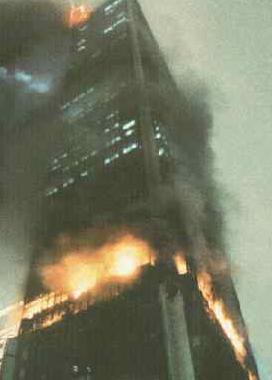 |
| The Interstate Bank Building fire consumed several floors but did not damage the steel superstructure. |
Recent examples of highrise fires include the 1991 One Meridian Plaza fire in Philadelphia, which raged for 18 hours and gutted 8 floors of the 38 floor building; 1 and the 1988 First Interstate Bank Building fire in Los Angeles, which burned out of control for 3 1/2 hours and gutted 4 floors of the 64 floor tower.
Both of these fires were far more severe than any fires seen in Building 7, but those buildings did not collapse. The Los Angeles fire was described as producing "no damage to the main structural members". 2
Research indicates that even if a steel frame building were subjected to an impossible superfire, hundreds of degrees hotter and far more extensive then any fire ever observed in a real building, it would still not collapse. Appendix A of The World Trade Center Building Performance Study contains the following:
|
|
In actual building fires, steel beams and columns probably never exceed 500 C. In extensive fire tests of steel frame carparks conducted by Chorus Construction in several countries, measured temperatures of the steel columns and beams, including in uninsulated structures, never exceeded 360 C. 3
References
2.
Interstate
Bank Building Fire Los Angeles, California (May 4, 1988),
3.
Fire
Resistance of Steel Framed Car Parks, corusconstruction.com.
SOURCE: Please visit www.wtc7.net
WTC 7 blew its self up out of sympathy for the twin towers
Demolition Company: “WTC 7 Imploded”
The Frightening Truth About 911
keyword: world trade center building seven